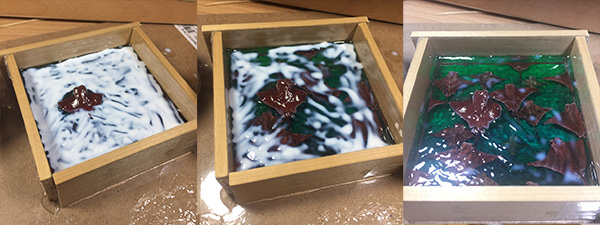No Risk, No Reward or Safety in Numbers, Daniel D. Brown, 2019
The title is meant to embody the dual possible fates of that lone fish racing from the school. Schooling evolved for a reason, as there can certainly safety in numbers in this scenario. Unless the sharks devour the entire school (google “baitball” from Sir David Attenborough’s Blue Planet). But perhaps if it swims fast enough it may escape being lunch. Or it may just make itself a target. I think this duality can serve as a metaphor to many aspects of our own lives as well, if you use your imagination.
I built this piece over the course of a few weeks, the process of which I documented with more stories than I’ve ever made (see “Sharks!” highlight on my profile). My inspiration came from both Blue Planet and from a photo of unknown provenance I saw online showing sharks swimming through a school of fish. One of my goals was to use different tools and clashing styles, with no idea how the final piece would look together. I was filled with trepidation starting it, just because of the complexity of scrollsaw work in the fish layers. But it wasn’t as difficult as I feared. I did make the fish bigger than planned, due to the exponential increase in the number of cuts with decreasing fish size.
I drew the initial design in illustrator, making many versions of one fish using the new “puppet warp” tool. The fish are built of three two-tone layers, with an alternating gradient of tones (i.e. mahogany/walnut, red oak/mahogany, ash/red oak – from bottom to top). These were scrollsawed.
The blacktip reef sharks were made from a single piece of ash, first roughed out on the bandsaw, then power-carved with various Dremel burrs and some hand carving. The fin details were all pyrography using @tamarynart’s wood burner. The ocean floor is a nice piece of “curly” maple I had that I thought would be nicely reminiscent of both a sandy floor and the caustic light refracted from waves above. Finally, the walnut frame was power carved using @kutzall carving dishes on an angle grinder. The scene was finished with minwax gloss and the frame with Arm-R-Seal semi-gloss.
























